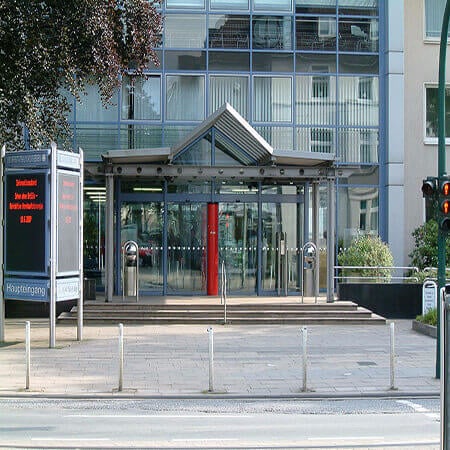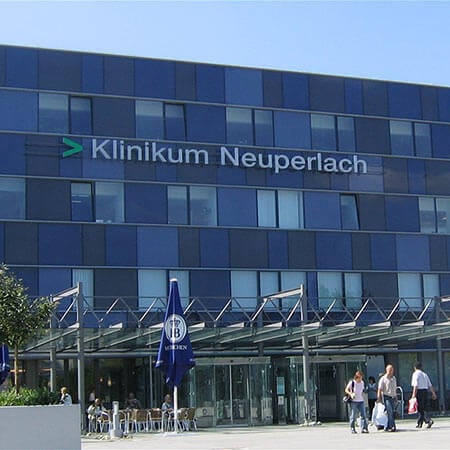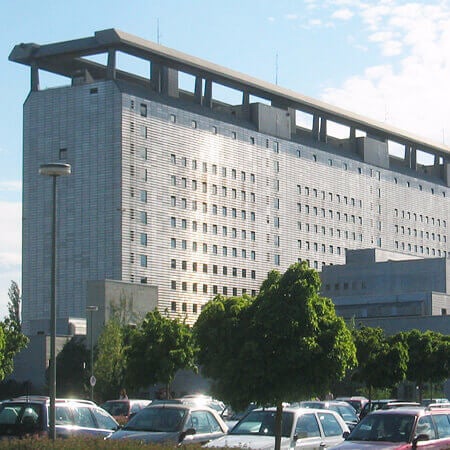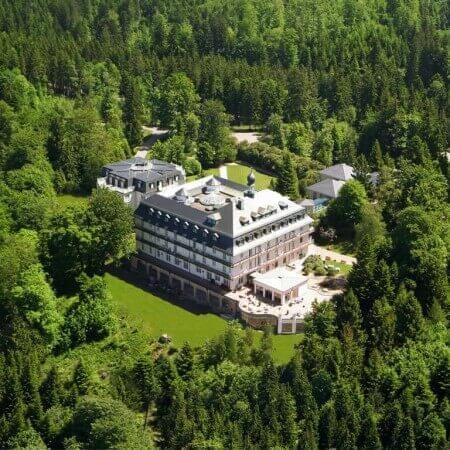Coronary heart disease
Coronary heart disease (CHD) is a pathology that occurs as a result of the myocardial oxygen starvation due to the blood supply failure. This illness is considered to be one of the most common in the world. CHD is one of the most frequent causes of death.
The Booking Health portal presents 79 German clinics specializing in coronary heart disease (CHD) treatment
Show all clinics
Coronary heart disease (CHD) – Diagnostics
The basic diagnostic method that helps to determine CHD is electrocardiography. Additional methods of ECG are:
- Functional examinations. ECG can be carried out with the physical activity to receive more comprehensive information about the coronary blood flow.
- Holter monitor. The ECG is carried out continuously, during 24 hours. A person wears the portable device on the body and leads a normal lifestyle.
Other diagnostics methods are:
- Echocardiography (ultrasound examination of the heart) allows to assess the speed of blood flow through the coronary arteries, myocardium and valvular apparatus condition, the contractile activity of the heart.
- Laboratory examinations help to diagnose the myocardium infarction. Analyses for troponin, LDH, creatine kinase, and myoglobin are used.
- Angiography is a radiographic method of examination. During this examination a contrast agent is injected into the coronary blood vessels. Then, a number of X-ray images or scans are done with the help of the computed tomography. Method is usually performed in order to make a decision about the necessity of the surgical treatment of CHD.
Best clinics for the coronary heart disease (CHD) diagnostics in Germany:
Coronary heart disease (CHD) – Treatment
Conservative treatment is mostly applied in case of CHD. A patient receives the medications that slow down the illness progression, decrease risk of the myocardial infarction and increase the quality of life by reducing or eliminating the symptoms.
There are also treatment methods that help to reach a stable clinical recovery. As a result, person can refuse from medications partially or completely and lead the same lifestyle as before the CHD occurrence.
Among the most effective methods of the treatment are:
- Stenting. Metal spiral is inserted into the coronary artery. It widens the vessel and presses the atherosclerotic plaques to the artery walls. Normal blood supply of the myocardium is restored as a result of this surgery.
- Coronary artery bypass surgery is an operation of choice if there are multiple lesions of the heart blood vessels. The purpose of this treatment method is the creation of the additional arteries that feed the myocardium. Bypass is also created from the patient’s own blood vessels taken from the other body parts.
- Atherectomy is a surgery aimed at the blood clot removal from the coronary artery. It’s done with the help of a laser or the surgical instrument. Atherectomy can be carried out if there is just one clot that clogs the normal blood flow while the general condition of the coronary arteries remains satisfactory.
- Laser revascularization. During this type of surgery, a doctor makes several holes in the myocardium. After that, the blood starts to flow from not only coronary arteries, but also from the left ventricle cavity directly. It helps to ensure the myocardium trophism even if the obvious atherosclerosis of the coronary arteries is present.
Coronary heart disease – Innovative treatment
Along with traditional methods of the treatment new therapeutic approaches are being developed.
During the recent years, the following promising ways of struggle with CHD, its symptoms and consequences have appeared, such as:
- Stem cells treatment. CHD causes the gradual myocardium damage. Muscular tissue is not restored but replaced with the connective tissue. Stem cells treatment is used to recreate the normal myocardium structure that helps to normalize the heart rate and conductivity. Stem cells are taken from the patient’s blood, then they are cultured in order to increase their number and injected back intravenously.
- Shock wave therapy. The impact of the shock waves contributes to the growth of the new blood vessels and myocardium blood supply restoration. Sustained clinical improvement (functional class of the cardiac angina decreasing, physical activity tolerance increasing) is the result of treatment.
- Quantum therapy. Percutaneous laser irradiation of blood is applied for the CHD treatment. This technique helps to reduce the symptoms of the cardiac angina due to the blood rheology improvement, expansion of coronary vessels, and improvement of the metabolism in the heart muscle.
- Enhanced external counterpulsation. Cuffs are put on the person’s limbs. During the certain phases of the cardiac cycle the air is pumped into or from the cuffs. To ensure the long-term effect, the procedure should be performed regularly. This leads to the revascularization (the formation of collateral branches of the arteries), endothelial function improvement (the functional extension of the vessels occurs) and alleviation of the heart failure signs.
Best clinics for the coronary heart disease (CHD) treatment in Germany:

University Hospital Essen
9061.02
28918.2326265.23


University Hospital of Ludwig Maximilian University of Munich
Coronary heart disease (CHD) – Rehabilitation
Cardiological rehabilitation improves the quality of life in patients with cardiovascular diseases. It increases the effectiveness of maintenance treatment in the case of chronic cardiovascular diseases, and also facilitates recovery after exacerbations. Rehabilitation is extremely important in case of cardiac surgical interventions.
Cardiological rehabilitation has the following aims:
- Restoration of heart muscle normal function
- Elimination of symptoms (for example, chest pain, dyspnea, etc.)
- Improving working capacity and providing patient with the opportunity to return to previous professional activities
- Improving physical stamina
- Prevention of exacerbations (including elimination of the risk factors)
- Consulting the patient on self-control and basic principles of self-help
- Improving patient's mental state, ability to "live with the disease"
Effective cardiological rehabilitation is performed only in countries with the developed medicine, as innovative medications, appropriate medical equipment and qualified healthcare professionals are available only there. Basic methods of cardiological rehabilitation include:
- Drug support for normalization of blood pressure, blood clotting, cholesterol level
- Dosed physical exercises under the supervision of an instructor, with a gradual increase in intensity
- Physiotherapy (darsonvalization, electrophoresis with medications, electrosleep, laser and magnetotherapy)
- Relaxing techniques (massage, aromatherapy, acupuncture, psychotherapy)
- Dietotherapy (control of salt and liquid amount, using spices, etc.)
- Modification of lifestyle (smoking cessation, body weight normalization)
In Germany, cardiological rehabilitation undergoes under the constant control of cardiologists, therapists and rehabilitation specialists. Programs are designed for 2 weeks. If necessary, they can last much longer. In this country, the patient is provided with qualitative care, accommodation in comfortable rooms and individually selected meals.
Rehabilitation programs in Germany show one of the best results in the world. Most patients successfully restore their working capacity and excellent health there. They remain physically active, return to the full social and family life.
Best clinics for cardiac rehabilitation in Germany:
Author:
The article was edited by medical expert, board certified Dr. Nadezhda Ivanisova. For the treatment of the conditions referred to in the article you must consult a doctor; the information in the article is not intended for self-medication!
Sources:
European Society of Cardiology
JAHA - Journal of the American Heart Association
The cost of services includes
Here you can find the cost of treatment for this disease at the German University Hospitals. Leave a request and we will provide a free consultation with a doctor and will start organizing the whole treatment process.
The program includes the following:
- Issuing of an invitation for getting a visa for treatment as quick as possible
- Fixing an appointment at a time convenient for you
- Preliminary organization of a comprehensive examination and discussion of the forthcoming treatment plan
- Arranging transfer from the airport to the hospital and back to the airport
- Provision of interpreting services and services of a personal medical coordinator
- If necessary, assistance in the organization of further surgical treatment
- Provision of a medical insurance against treatment complications covering up to 200,000 euro
- Preparation and translation of medical records and recommendations from the hospital
- Assistance in the subsequent communication with your attending physician, including consultations on repeated X-ray images through the unique medical document management system E-doc




